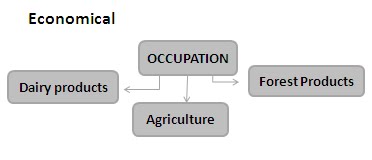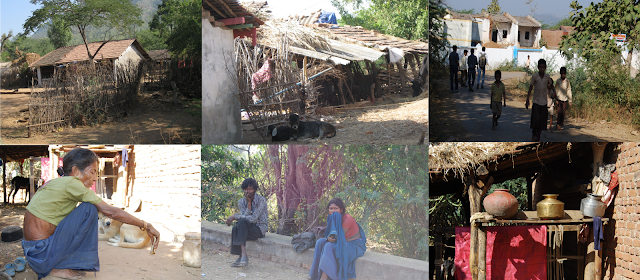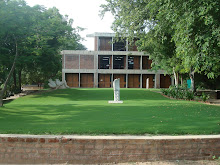skip to main |
skip to sidebar

To find how current/modern system have affected the natural balance of Polo region specifically the economic and social life of tribal so as to propose a model for economic development of these tribals using local resources






CEPT Interactive workshop # 6
Development of economic activities in river basin

Names of members:
| Neha mungekar | Nidhi Parikh | Pushkar Tambe |
| Devang Rohit | Jhuma | Smitha Navda |
| Arvind Caulagi | Dhara Desai | Ketul Ruparalia |
| Anuj Kathuria | Sravanthi Rajamallu | Neerav patolia |
| Milan nayak | Jekin Thacker | Chandraprabha Radhakrishnan |
| Kunal panchal | Yogesh Kumar | Reena Jayswal |
| Harika arugonda | Shantanu Autade | Shweta Agarkar |
| Sudeep Maiti | Janak Gajjar | Hardik Patel |
| Padmashri | Durba Sarkar | Shweta jaiswal |
| Ruchit Patel | |
Topic description
"Development" has been bracketed as a mainly technological and economic process, in which nature and human institutions will necessarily have to take second priority. If the paradigm of development is questioned and revised, what could be the nature of living in Sabarmati Valley?
" Focus "
About "POLO":
For the matter of study we have selected a area named "POLO" the brief about the region is given below:
Polo Forest lies in the hilly areas of Vijaynagar in Sabarkantha District of Gujarat. This area is also noted for its archaeological heritage and is about 145 km from Ahmadabad. The total area covered by the forest is around 400 sq km. Polo is a haven for bird watchers. Different varieties of animals such as bears and panthers, and the varied floras found here makes Polo a naturalist's delight. The ancient Sharneshwar Temple and Panchayatan Temple nestled amid this dense forest is worth visiting. The Polo Forest can be approached through theNational Highway 8. Vijaynagar is near, a historic town.
Charts of information required:
Shown below is the structural representation of "Required information". we have spotted the main areas to be focused during gathering information and also the sub areas on which we need to ask a question during our field visits.

Relationship and sociopolitical structure
the figure below shows our relationship with the river and the general socio-political structure.

History of Polo
Polo - built around river harnav.
• • Established-10th sanctuary- parihar kings of
• •Idar-later, conqured by rathod rajputs of mewar.
• •Fertile land - civilization flourished and started to spread in other parts of the region
• •Regional tribes, - kathodi community-assam,
• - Rabaris- rajasthan & gujarat .
Geographical:
• Vijaynagar - foothills of aravali range.


life of people

Case Study:
For the purpose of study we the members of the group have referred some of the case studies and below is the summery of each:
CASE 1:
WHY DO SOME SOCIETIES MAKE DISASTROUS DECISIONS?
A chapter from the book 'Collapse'(How societies choose to fail or succeed) by Diamond Jared talks about how certain societies(complex ones at that) have taken certain group decisions which have led to their collapse.
Jared proposes a road map of factors that contribute to the failures of group decision making. He broadly divides them into four categories:
- A group may fail to anticipate a problem before the problem actually arrives.
- When it does arrive, the group may fail to perceive it.
- Even if they perceive it, the may fail even trying to solve it.
- They may try to solve it, but may fail to succeed.
While stating several examples, including the collapse of the Easter island society, which made a disastrous decision of cutting down all trees on the island, there are reasons given why a society may fail to anticipate a problem.(Lack of prior experience, lack of knowledge due to false analogy etc.)In the process, he makes pit stops to address several issues of serious concern like creeping normalcy (referring to slow trends concealed within noisy fluctuations eg.Global Warming), Landscape amnesia (forgetting how a landscape looks because of gradual changes. Of how rational behavior, might not help the society in the long run, and psychological denial of a problem, which proves to be disastrous, have also been discussed.
CASE 2:
ECOLOGY, UNCERTAINTY AND MEMORY
IMAGINING A PRE-COLONIAL; IRRIGATED LANDSCAPE IN SOUTH INDIA
Indian villages have traditionally integrated with grazing lands, agricultural fields, forests and grooves, and water resources like ponds, wells and tanks. And also how the state’s development programmes have torn this integrated character of the villages i.e. the process of state control over natural resources.
Introduction
The past nowadays is a powerful tool in environmental argumentation. Historical narratives act as a powerful ordering force by which the present creates the past.
Indigenous water harvesting as ideology
During the 1980s and 1990s as series of protests over drought and scarcity, inequity and over-exploitation and over large dam projects brought water issues centre stage within the environmental agenda in India.
In broad political and intellectual position, the modern state in India is held responsible for the destruction of common property environmental resources more generally, through over exploitation.
The intervention of the state or assertion of proprietary rights over commons resources such as water and forests, is judged as the principal force behind the demise of village traditions of sustainable resource use.
Here there are three key ‘new traditionalist’ themes recur:
Ø The idealized past of the village community.
Ø Its erosion by the rise of the centralized state.
Ø The hope of the future recovery.
Perceptions of degradation: Tanks in the early company years
Close to the 18th century the officers of the east India company considers these tanks only as landscape feature resulting in serious disrepair.
Tank irrigation systems in a South Indian Coastal Plains Region
In the southern Tamil plains districts, heavy rainfall was captured, stored and controlled in a large number of reservoirs or tanks. Stable settlement would not be possible in this region without the storage of water in tanks. But as the time goes there is a huge increase in chain of such tanks.In 1708, as on several occasions, heavy flooding followed years of drought and scarcity. Floods and drought are only the most visible manifestations of pervasive ecological and social uncertainty associated with tank irrigated agriculture on the south Indian semi-arid plains.
Royal gifts, redistribution and the rule of resources
Earlier land and water resources were donated by rulers specifically so that they could be improved; but now it’s a source of investment.
Conclusion
Contemporary politics of resources are affecting the village peoples.
CASE 3:
CHINA, LURCHING GIANTS
China is the world’s most populous country, one fifth of the world’s total population. It takes prominent positions in different aspects of trade, economy; food, chemicals etc. china’s largest population and economy lead to the environmental problems in the country and the neighboring countries too. Chinas geography and economy are fragile towards issues like degradation of environment, natural resources, natural gasses, under ground water and marine ecology in and around the country.
China is the largest producing country of fertilizers, pesticides, steel, electricity, chemical textiles and is the largest consumer of oil, coal etc. China’s energy efficiency in industrial production is only half of the First World, its irrigation relies on insufficient surface methods responsible for water wastage, soil nutrient loses, eutrophication and river sediment loads. China is poor fresh water, severe water shortages in cities and industrial production. Two-third depends on groundwater pumped from wells tapping aquifers.
Soil problems affect 19% of land resulting 5 billion tons per year declining the ecology of under ground species. Overgrazing and land reclamation for agriculture affected one quarter of north china. It also recycles a little of trash and most pollutants in the agricultural land.
Deforestation leads to floods damaging in 25$ affecting 240 million people in 1996 and 98. Degradation of grassland and decrease in wetlands has implications on food production of China.
China is noted for the frequency, number, extent and damage of its natural disasters especially dust storms, landslides, droughts and floods.
People of China have no connection through trade and travel with people elsewhere. it trades about 621$ billion but has no foreign investment till 1991. All transfers of money contribute to fueling China’s rapid economic growth and environmental degradation. China accepts garbage/scarp that serves as a cheap resource of recoverable raw materials. In 2002, Zhejiang Province recorded a 400 ton shipment of electronic garbage. This represents direct transfer of pollution from the first world to China. It also becomes the largest producer and consumer of gaseous ozone-depleting substances contributing 12% of world’s carbon dioxide emissions rising in China.
China being a very populated country has very low per capita rates, for example – only 9% of per-capita consumption rates of the leading industrial countries in steel, aluminum, copper and lead. It is the same level of per capita consumption rates.
It reflects in the lifestyle of the population.
The strengths and risks of China’s unity have persisted into recent times, as China continues to lurch on major policies affecting its environment and its population.
CASE 4:
MINING AUSTRALIA
The abundance and availability of natural resources has been one of the strong points of Australia’s economy and mining of the mineral resources plays a key role in the economic development, by bringing in export earnings. However due to the over ambition of development the natural resources have been over exploited and is limiting the reserve of resources. Australia is one of the best examples to study the problems of development based on environmental and ecology related issues, as here the environment is fragile and the problems have already started escalating. Due to a well educated and low population levels and also the presence of a stable government body here one can concentrate non the ways in which Australia copes up with this situation without the inclusion of other problems and factors like mismanagement or corrupt political administration. The issues solely deal with the impact caused on the ecology by man’s interventions.
Mining is a process of exploiting the non renewable resources that cannot be regenerated. The rate at which the renewable resources are getting exploited is much greater than the rate at which it gets regenerated. Both these resources are endlessly being taken from earth, at an increasing rate with out being regenerated or replaces thus it is not a balanced of sustainable system. The irony here the renewable resources are getting more depleted compared to the non renewable resource reserve. Mining affects the ecosystem which is an interrelated balances system. The inherent geographical features of Australia includes 3 main factors –
- Soil – due to excess depletion of minerals the nutrients and salt reduces causing low plant growth and productivity.
- Fresh water availability – the soil conditions and green cover reduces the availability of fresh water and directly effecting the fishing industry and its productivity.
- Distance within both Australia and overseas- vast areas of land in Australia are covered with deserts and the main cities are spread and separated out thus involving a lot of travel and access related expenses and problems both within and in overseas dealings.
From the above we learn that
- How the overdoing of the process of extraction from renewable and non renewable recourses like mining can cause imbalance in the eco system and cause lower productivity in the future. Thus eventually causing a hindrance to development.
- Development is a cyclic process, if few things are corrupt on way the entire system or cycle gets effected.
- How we must learn to conserve and rejuvenate natural resources.
CASE 5:
THE ANCIENT ONES: THE ANASAZI AND THEIR NEIGHBOUR
The theme of this chapter is of human environmental impact and climate change, environmental and population problems spilling over into warfare, the strengths but also the dangers of a complex non self sufficient society due to their dependency on imports and exports and societies which have collapsed after attaining peak population numbers.
The Anasazi culture flourished in the region currently known as the Four Corners. The territory was covered by juniper forests which the ancient peoples learned to exploit for their own needs. These southwestern cultures underwent regional collapses, drastic reorganization or abandonments at different places and time. What accounts for all these declines or abrupt changes in so many neighboring societies were environmental damage, drought or warfare and cannibalism.
The southwestern history deals with a method called ‘tree rings’ which allows reconstructing the past climate and finding out the wet and dry periods.
There were different agricultural strategies that the Anasazi society adopted a few were discussed. One such strategy was to plant crop and live near a permanent or dependable source of water, but on a landscape bench above the mean floodway which was the technique adopted by the Chacho Anasazi in the Chacho Canyon about 600AD.The Chacho problems and possible solutions incorporated by them are also elaborately mentioned.
The Chacho valley grew, its demands on the environment grew and resources declined and people came to be living increasing close to the margin of what the environment could not support was the ultimate cause of abandonment. The proximate cause was drought.
The message we can learn from this chapter and civilization is that a lot of “us” modern dwellers can get away with a lot of waste when the economy is good. We forget that conditions fluctuate and we might not be able to predict when conditions change. We get easily attached to the lavish lifestyle and leaving an enforced controlled lifestyle or bankruptcy as the sole out.
CASE 6:
THE DREAM MACHINE
- Jhabua district is a drought prone moonscape from which people migrate in great numbers in search of a livelihood. in this area bureaucracy dominated by caste Hindus and trading class dominated by caste Hindu and Muslims.
- Population of bhil and bhilala adivasis doing farming on semi0arid, undulating terrain.
- Problem of this area is that unable to invest in making agriculture mare productive, denied access to forest-based resources and deprived of state developmental inputs due to this adivasis are forced to migrate in search of work.
- Then how had this state stop a massive people’s movement, transformed a dry land district into a fertile place and taken an impoverished people to prosperity.
- The answer of this puzzle seemed to lie in the very design of the watershed mission which include integrated natural resource planning and decentralized management.
- Integrated natural resources planning adopts the watershed as a hydrological system as its units of operation in which regulating the movement of water through the ecosystem as rainfall, subsoil and surface water, and as water stored in biomass.
- Decentralized management adopts system as decentralized control into the hands of villagers and they are free to decide and implement various activity and receives funds directly from the project implementing agency.
- This case study also focused on the heterogeneity of state actors and practices, especially those acts of subversion that compromise the coherence of a project of rule and also widened the analysis to show how micro-politics in Jhabua, Metropolitan organizations and transnational processes simultaneously shape each other.
Guided by:
| Dr. Harini Mittal |
| Ar. Sandip Patil |